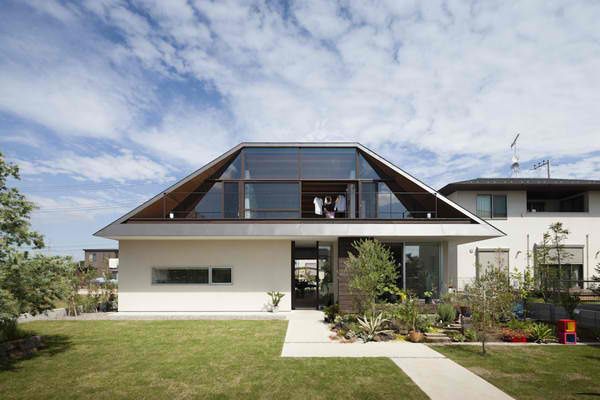Innovative Japanese roof designs are increasingly sought after for contemporary homes, blending traditional craftsmanship with modern aesthetics and functionality. Here are several innovative Japanese roof designs that are popular in contemporary architecture:

- Green Roofs (草屋根):
- Green roofs, or “kusa yane,” incorporate vegetation and landscaping on the roof surface, providing insulation, improving air quality, and reducing stormwater runoff. Contemporary homes often feature green roofs as a sustainable and visually striking design element that connects the structure with nature.
- Butterfly Roof (蝶蔵屋根):
- The butterfly roof, or “chōzō yane,” features two roof surfaces sloping upwards from the center, resembling the wings of a butterfly in flight. This distinctive roof design allows for ample natural light and ventilation, making it ideal for contemporary homes seeking a sense of openness and connection to the outdoors.
- Shed Roof (舎屋根):
- The shed roof, or “shaya yane,” is a simple and modern roof design characterized by a single slope extending from one side of the building to the other. Shed roofs provide efficient rainwater drainage and create opportunities for high ceilings and expansive windows in contemporary homes with minimalist aesthetics.
- Gable Roof with Modern Twist (切妻屋根):
- The gable roof, or “kirizuma yane,” is a classic Japanese roof design featuring two sloping sides meeting at a ridge, forming a triangular shape. Contemporary interpretations of the gable roof often incorporate modern materials and innovative details to create a sleek and streamlined appearance that complements contemporary architecture.
- Cantilevered Roof (張り出し屋根):
- Cantilevered roofs, or “haridashi yane,” extend beyond the exterior walls of the building, creating shaded outdoor spaces and striking architectural features. Contemporary homes often feature cantilevered roofs to provide sheltered outdoor seating areas, balconies, or terraces while maximizing usable space.
- Curved Roof (曲屋根):
- Curved roofs, or “magari yane,” feature gently sloping curves that add a sense of elegance and fluidity to contemporary homes. These innovative roof designs can be achieved using modern materials such as steel, glass, or composite panels, creating visually stunning architectural statements.
- Multi-Level Roofscape (重ね葺き屋根):
- Multi-level roofs, or “kasane nuki yane,” incorporate multiple roof levels and angles to create a dynamic and visually interesting roofscape. Contemporary homes with multi-level roof designs often feature varied roof heights, pitches, and materials to add depth and dimension to the architectural composition.
- Transparent Roof Elements (透明屋根):
- Transparent roof elements, such as glass or polycarbonate panels, allow natural light to penetrate the interior spaces while providing protection from the elements. Contemporary homes often feature transparent roof elements in atriums, skylights, or covered outdoor areas to create bright and inviting living environments.
- Roof Gardens and Terraces (屋上庭園):
- Roof gardens and terraces, or “okujō teien,” transform the rooftop into usable outdoor living spaces, complete with gardens, seating areas, and recreational amenities. Contemporary homes with roof gardens and terraces blur the boundaries between indoor and outdoor living, providing residents with private retreats and opportunities for relaxation and socializing.
- Floating Roof (浮屋根):
- Floating roofs appear to hover above the building, creating a sense of weightlessness and modernity. Achieved through strategic structural design and innovative construction techniques, floating roofs add drama and visual interest to contemporary homes while providing shade and shelter.
These innovative Japanese roof designs offer contemporary homes an opportunity to blend traditional craftsmanship with modern aesthetics and functionality, creating unique and inspiring architectural expressions that reflect the evolving needs and preferences of homeowners.



